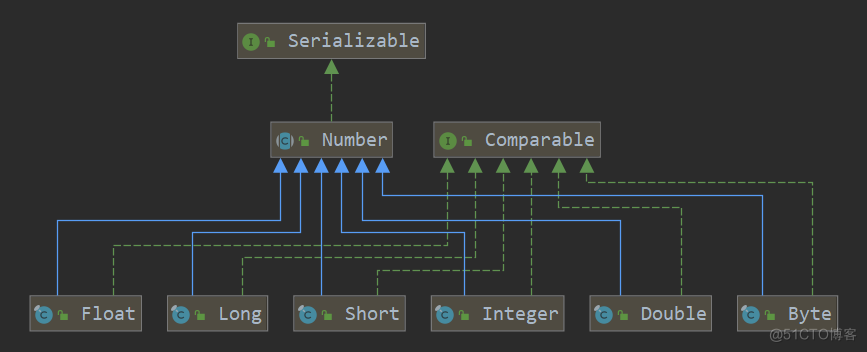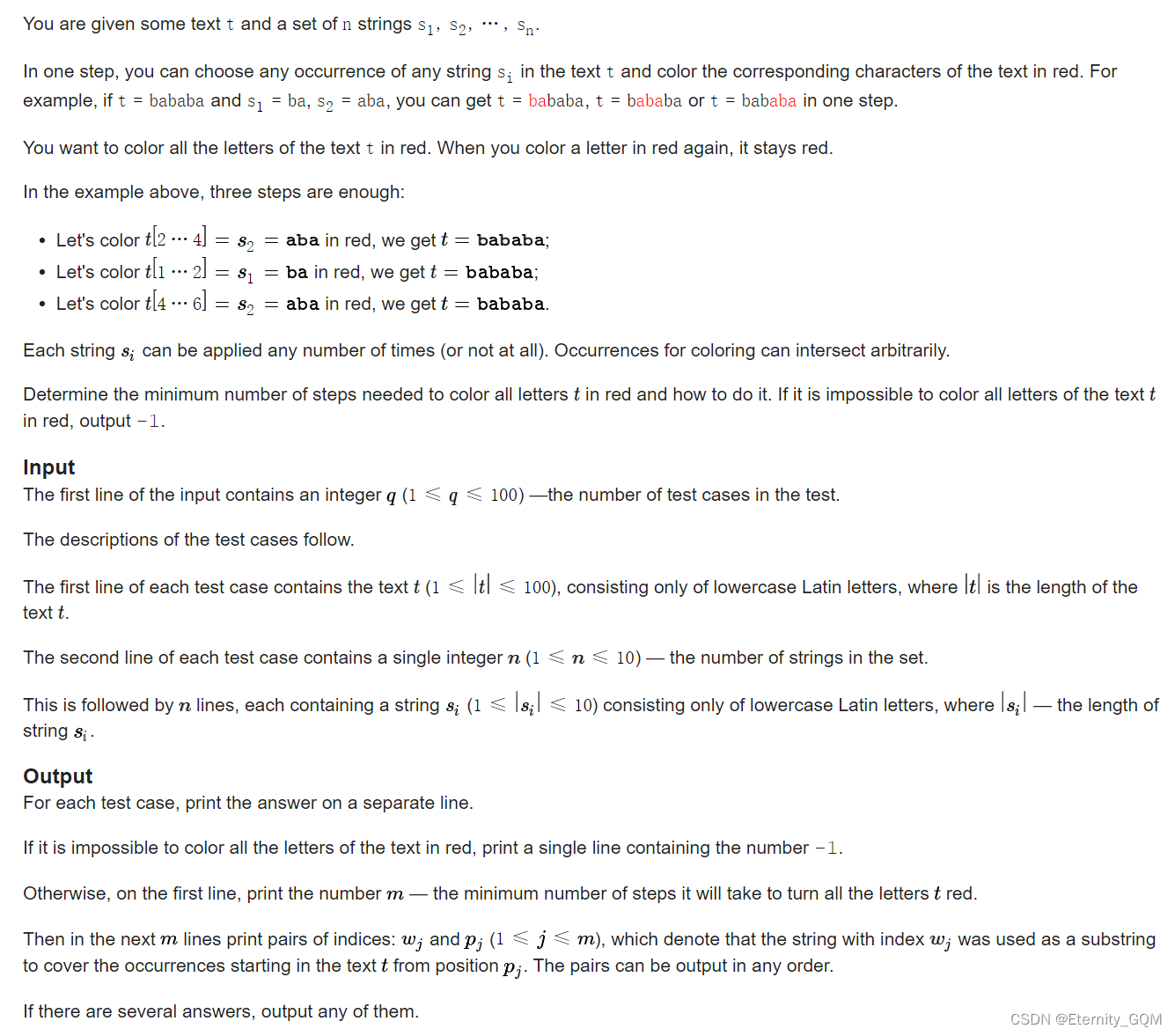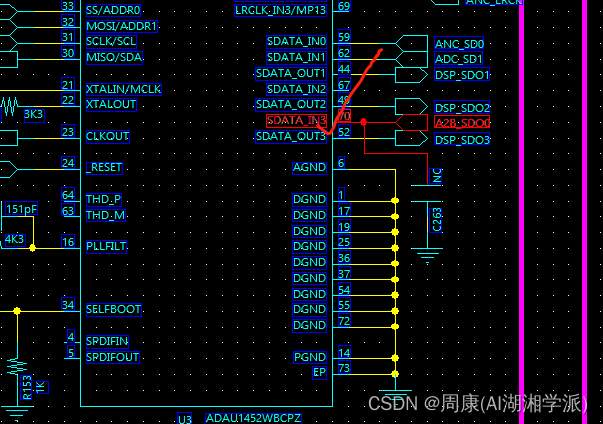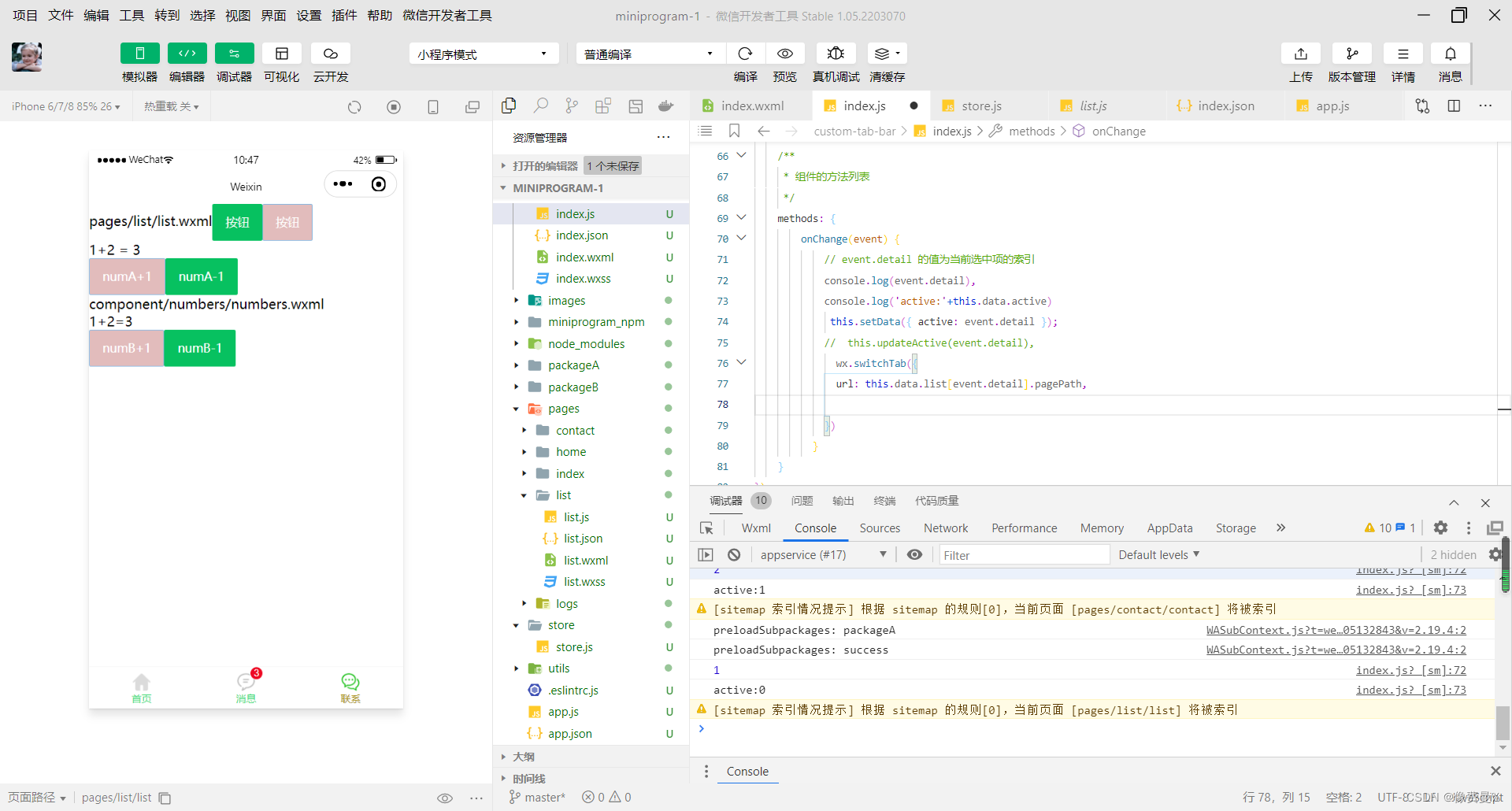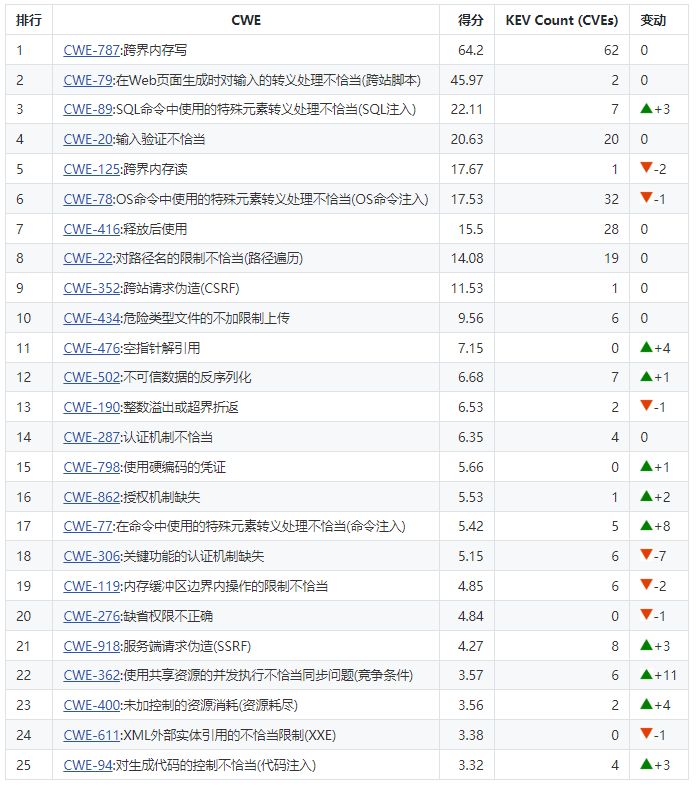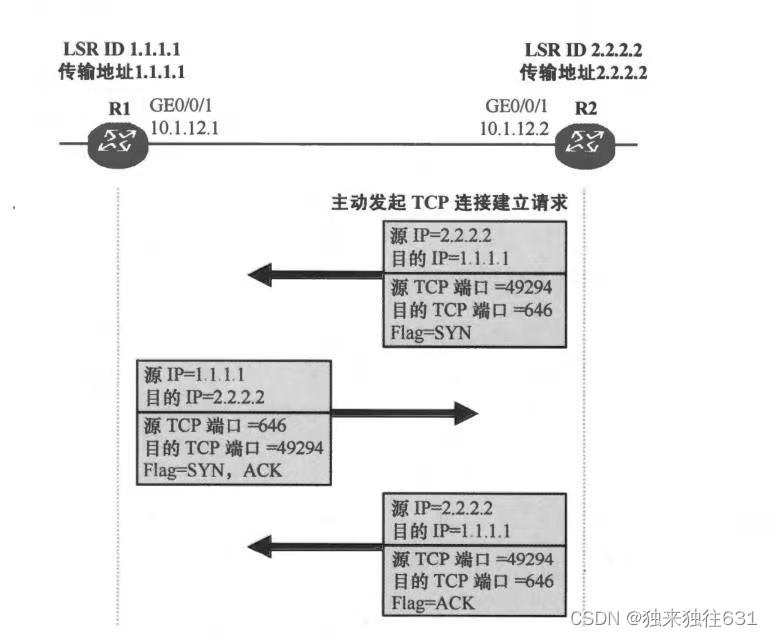当前位置:网站首页>链表的归并排序[自顶向下分治 || 自低向上合并]
链表的归并排序[自顶向下分治 || 自低向上合并]
2022-08-02 15:48:00 【REN_林森】
前言
对链表进行归并排序,不需要额外的辅助空间,可将空间复杂度降到O(1)。快慢指针寻找中点,将链拆开,递归回溯进行合并;或者从1/2/4/8进行拆链再合并&缝合链表。
一、链表排序
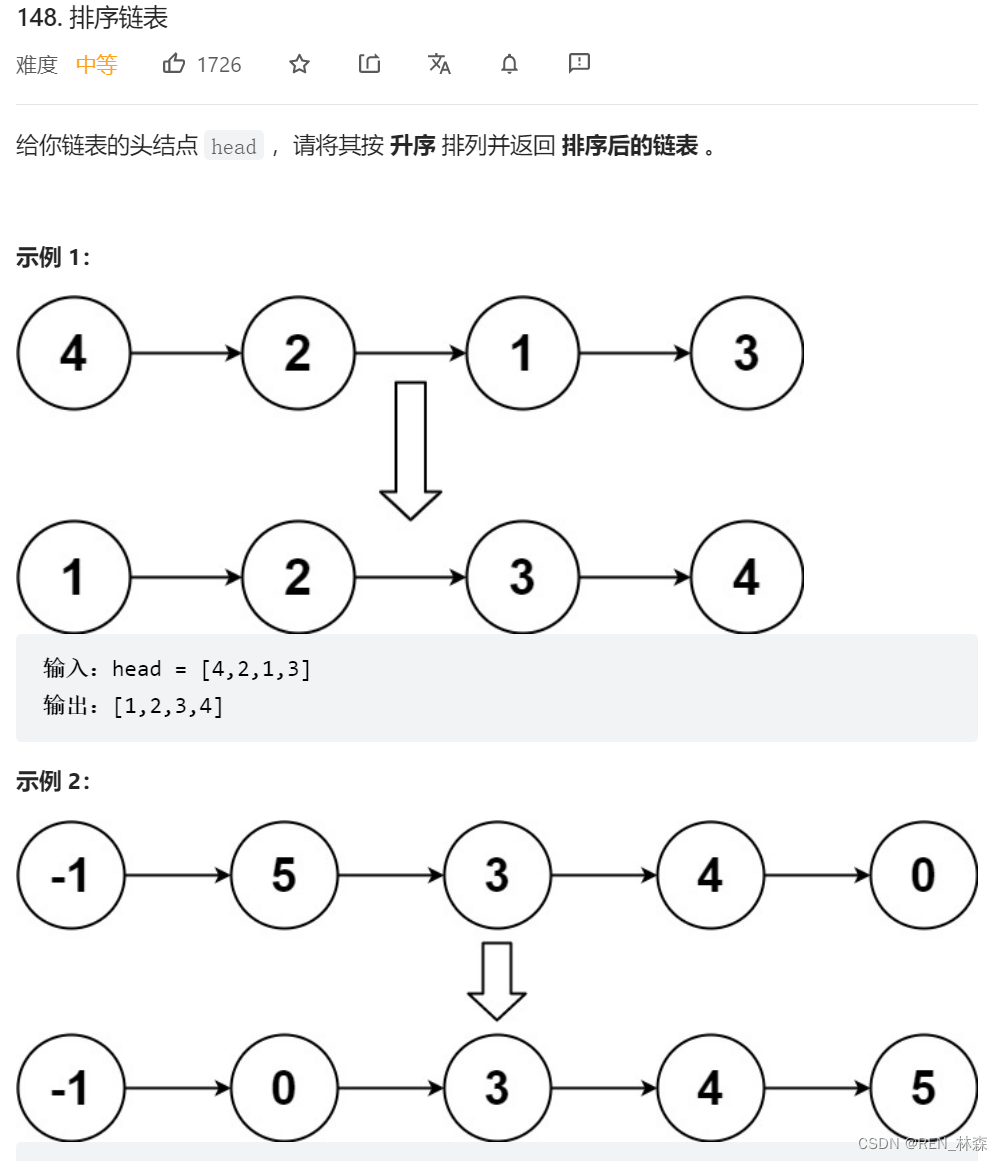
二、分治 & 合并
1、自顶向下分治
public class SortList {
// 链表归并排序。
// review: 关键点:快慢指针寻找中间节点 + 归并前的拆链(自己逻辑不清晰,merge前需要拆链,sortList时不需要拆。)
public ListNode sortList(ListNode head) {
if (head == null) return null;
return sortList(head, null);
}
// 自顶向下递归将链表分解成二叉树,回溯时完成子树节点的不断合并。
private ListNode sortList(ListNode left, ListNode right) {
if (left.next != right) {
// 快慢指针找中间节点。
ListNode slow = left, fast = left;
while (fast != right) {
slow = slow.next;
fast = fast.next;
if (fast == right) break;
fast = fast.next;
}
ListNode l1 = sortList(left, slow);
ListNode l2 = sortList(slow, right);
return mergeList(l1, l2);
}
// 分链 应该在sortList返回单个链表时进行拆链。
left.next = null;
return left;
}
private ListNode mergeList(ListNode l1, ListNode l2) {
ListNode dummy = new ListNode();
ListNode p = dummy;
while (l1 != null && l2 != null) {
if (l1.val < l2.val) {
p.next = l1;
l1 = l1.next;
} else {
p.next = l2;
l2 = l2.next;
}
p = p.next;
p.next = null;
}
p.next = l1 != null ? l1 : l2;
return dummy.next;
}
// Definition for singly-linked list.
public class ListNode {
int val;
ListNode next;
ListNode() {
}
ListNode(int val) {
this.val = val;
}
ListNode(int val, ListNode next) {
this.val = val;
this.next = next;
}
}
}
2、自低向上合并
// 自低向上。
class SortList2 {
// 方式二:自低向上,合并1/2/4/8个节点。
public ListNode sortList(ListNode head) {
if (head == null) return null;
// 求链表长度。
int len = getListLen(head);
// 自低向上。
ListNode dummy = new ListNode(0, head);
for (int size = 1; size < len; size <<= 1) {
// 每次从头开始。
ListNode cur = dummy.next;// head在变。
ListNode pre = dummy;
while (cur != null) {
// 取第一条链。
ListNode l1 = cur;
for (int i = 1; i < size && cur.next != null; i++) cur = cur.next;
// 取第二条链。
ListNode l2 = cur.next;
// 拆第一条链。
cur.next = null;
// 取
cur = l2;
// 此刻开始,cur可能为null。
for (int i = 1; i < size && cur != null && cur.next != null; i++) cur = cur.next;
// 拆第二条链。
// 防止非正常结束循环,即链表长度不够,即cur = null。
ListNode next = null;
if (cur != null) {
next = cur.next;
cur.next = null;
}
pre.next = mergeList(l1, l2);// 合并两条独立链表。
// 为后面的合并做准备。
while (pre.next != null) pre = pre.next;
cur = next;
}
}
return dummy.next;
}
private int getListLen(ListNode head) {
int len = 0;
while (head != null) {
head = head.next;
++len;
}
return len;
}
private ListNode mergeList(ListNode l1, ListNode l2) {
ListNode dummy = new ListNode();
ListNode p = dummy;
while (l1 != null && l2 != null) {
if (l1.val < l2.val) {
p.next = l1;
l1 = l1.next;
} else {
p.next = l2;
l2 = l2.next;
}
p = p.next;
p.next = null;
}
p.next = l1 != null ? l1 : l2;
return dummy.next;
}
// Definition for singly-linked list.
public class ListNode {
int val;
ListNode next;
ListNode() {
}
ListNode(int val) {
this.val = val;
}
ListNode(int val, ListNode next) {
this.val = val;
this.next = next;
}
}
}
总结
1)对链表O(nlogn)排序,可同时考察归并的分治思想,和链表的操作(链表合并/拆链等)。
2)练习掌握自顶向下思想和自低向上思想。
参考文献
[1] LeetCode 链表排序
边栏推荐
猜你喜欢
随机推荐
JZ81 调整数组顺序使奇数位于偶数前面(二)-相对位置变化
2.6 - 进程资源
一文搞懂│php 中的 DI 依赖注入
MySQL-4-常规概念
DevOps开发工具对比
tiup mirror sign
MPLS实验
金鱼哥RHCA回忆录:CL210管理计算资源--红帽的超融合基础设施
Go-4-在vim中无法跳转到源代码
第十五天笔记
《独行月球》
看我如何用多线程,帮助运营小姐姐解决数据校对系统变慢!
ICML/ICLR'22 推荐系统论文梳理
AI+BI+可视化,Sugar BI架构深度剖析
记一次内部分享——瞎扯淡
不平衡之钥: 重加权法知几何
美团面试:如何设计一个注册中心?
DSP-ADAU1452输入通道配置
机械臂速成小指南(十七):直线规划
JZ27 二叉树的镜像

